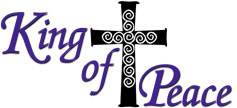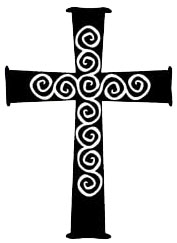|
The Rev. Frank
Logue The Passover Lamb From noon on Good Friday through Easter Sunday morning is the Christian Passover. In these three days Jesus passed over from death into life and in the process made it possible for us to do the same. The two stories of the Passover and Jesusí death are quite intertwined. This is why we can refer to Jesus as our Passover who is sacrificed for us. To look back to the beginning of Johnís Gospel, the evangelist wrote in the first chapter that John the Baptist referred to Jesus as ďThe Lamb of God who takes away the sin of the world.Ē In his death, Jesus makes this imagery real. Jesus becomes the Passover Lamb. The Gospel of John is very precise in its use of time and this is especially true with the story of Jesusí suffering and death. John wants his readers to understand that Jesusí is sentenced to die at 12 noon on the eve of Passover. 12 noon on the Eve of Passover was a special day and date. By giving us this, Johns lets us know what was happening in the Jewish Temple. Starting at that very hour, the priests were busy in the Temple killing the Passover lambs needed for approximately 100,000 people to sit down that night to a Passover meal. Thousands of lambs were dying as Jesusí was sentenced, led out to the cross and put to death. The disciple John saw this as no accident of history, but as a significant theological fact. Jesus died along with the Passover lambs making complete his identification as our Passover sacrificed for us. There is one small problem. Passover lambs were not sacrifices. I know this would be a small distinction for the lamb itself as either way it dies. But in the story of the first Passover, the lambs were not put to death to atone for sins, to make us one with God again. It is helpful to remember the context of Passover. The first Passover occurred on the night before the Israelites were set free from bondage to the Egyptians. The Israelites gathered in homes to eat the meal as prescribed by God. The blood of the Passover lamb was painted on the doorposts so that the Angel of Death would Passover the Jewish homes as it traveled through Egypt killing all the firstborn in the land. Passover is a central act of remembrance of the Jewish Community. The Passover is celebrated to remember how God worked mightily to set the Israelites free and lead them to the Promised Land. Through the Passover meal, the story of the Exodus from Egypt is retold. Each generation is called to make the story of the Exodus their own story. It is a way for each generation to annually renew the covenant made between God and their ancestor Abraham. On that first Passover, those who were part of the covenant ate the Passover lamb. The blood of the lamb was the outward sign on the doorpost that those within were part of Godís covenant with Abraham. Then on the night before he died, Jesus said that he was making a New Covenant. But the new covenant Jesus proclaimed was not a new idea. The prophet Jeremiah had anticipated the new covenant. The book of Jeremiah says, The days are surely coming, says the Lord, when I will make a new covenant with the house of Israel and the house of Judah. It will not be like the covenant I made with their ancestors when I took them by the hand to bring them out of the land of Egyptóa covenant that they broke, though I was their husband says the Lord. But this is the covenant that I will make with the house of Israel after those days, says the Lord: I will put my law within them, and I will write it on their hearts; and I will be their God, and they shall be my people. (Jeremiah 31:31-33) ďI will put my law within them, and I will write it on their hearts; and I will be their God, and they shall be my people.Ē In his death and resurrection, Jesus sealed that new covenant with his own blood. As the blood of the Passover lamb marked the Israelites as Godís own people, and protected them from the Angel of Death, Jesusí blood overcomes death and seals the new covenant that marks us as children of God. We too can pass over from death to life as we by faith make Jesusí death our own. Jesus expands on the role of the Passover lamb. Once a meal to connect the people of God to their covenant with God, Jesus also made the Passover lamb into the sacrifice to end all sacrifices. Jesus death would accomplish once and for all what the blood of thousands of lambs could never do. Jesusí sacrifice of himself had the power to end the whole sacrificial system. Jesus was the perfect Passover lamb who ended the need for sacrifices and changed the meaning of the Passover itself. There is yet another connection to the Passover lamb. The Passover lamb was first and foremost a meal. The way one sealed a connection with the covenant was to eat the meal. Jesus also asked his followers to do this. Jesus changed the significance of the Passover meal making his body the bread and the blood the wine. Jesus called on his disciples to continue to observe that ritual meal with its significance for the New Covenant and we do that each Sunday. Every week, we celebrate our Passover, the Holy Eucharist. Each week we remember Christ our Passover who is sacrificed for us. Each week we are invited to partake of the meal that binds us to the new covenant. On Good Friday, we remember Jesusí passion and death and are called to renew the covenant once more as we come forward to receive Christís body and blood in communion. In doing so, we renew our commitment to Jesus, the one who died that all might have life and have it abundantly. For it is on this day, that Jesus began the process of taking us with him from death to life. It is on this day that Jesus destroyed the power of death. And it is on this day that Jesus can once again calls you his people. Amen.
|

